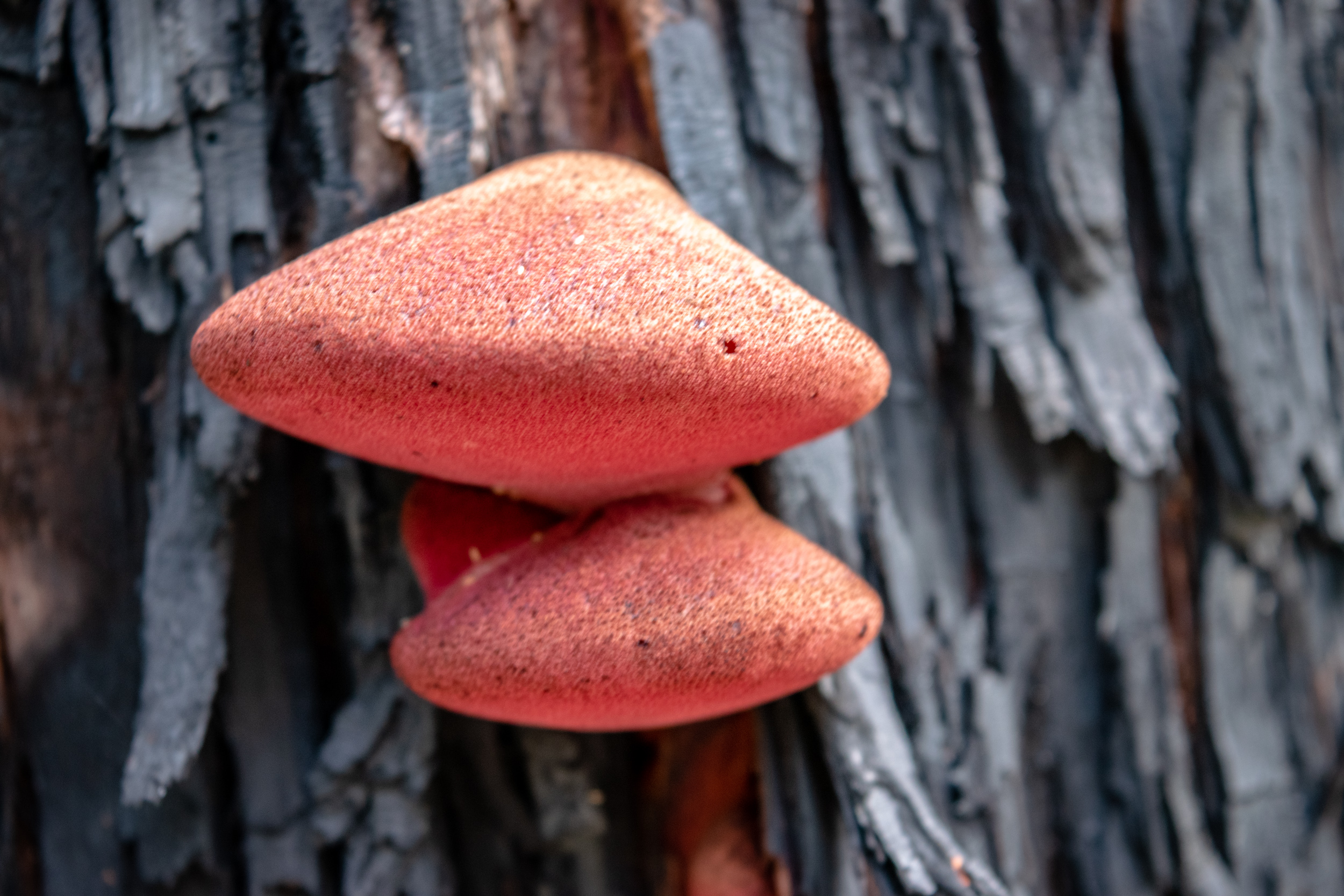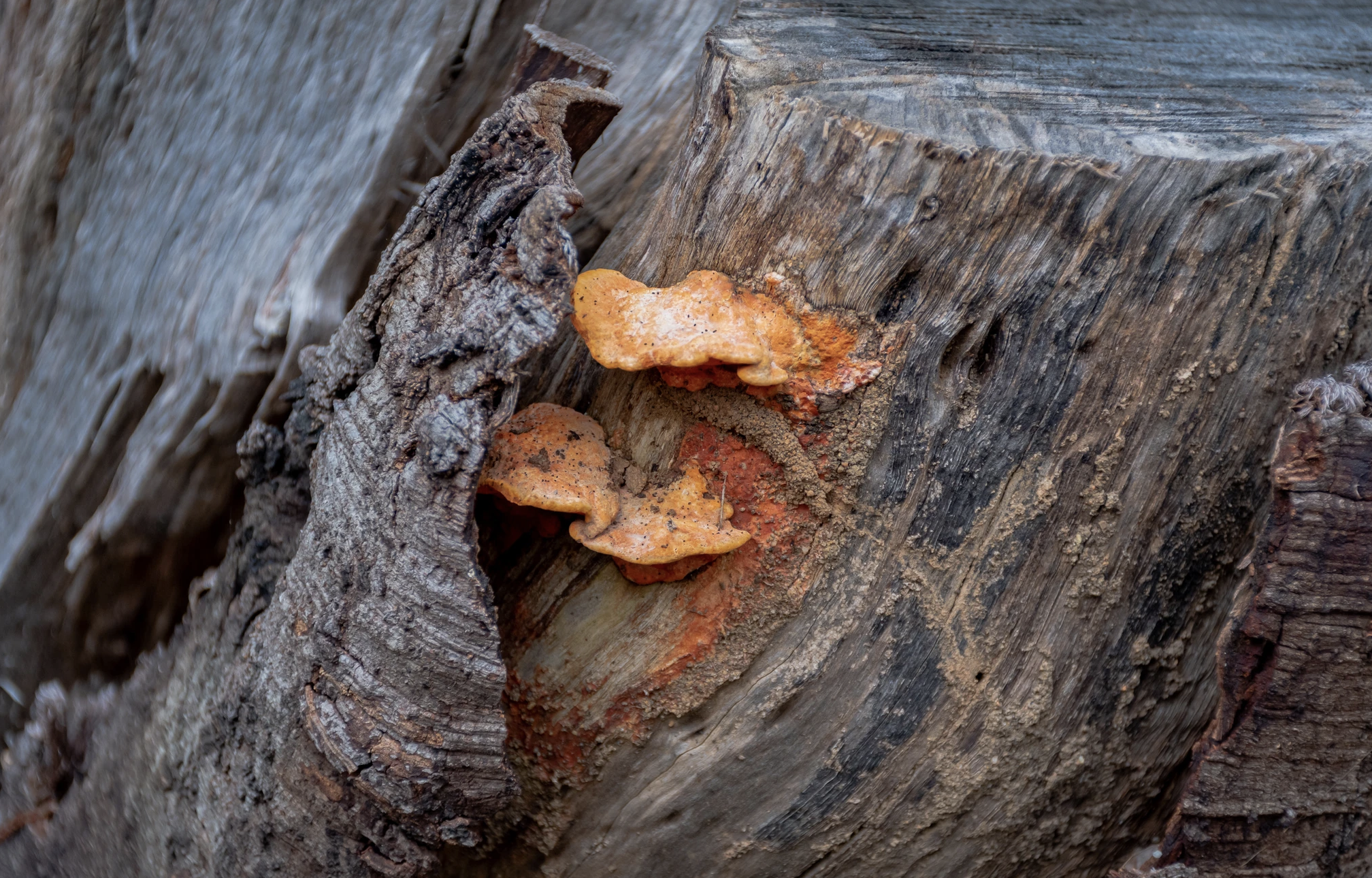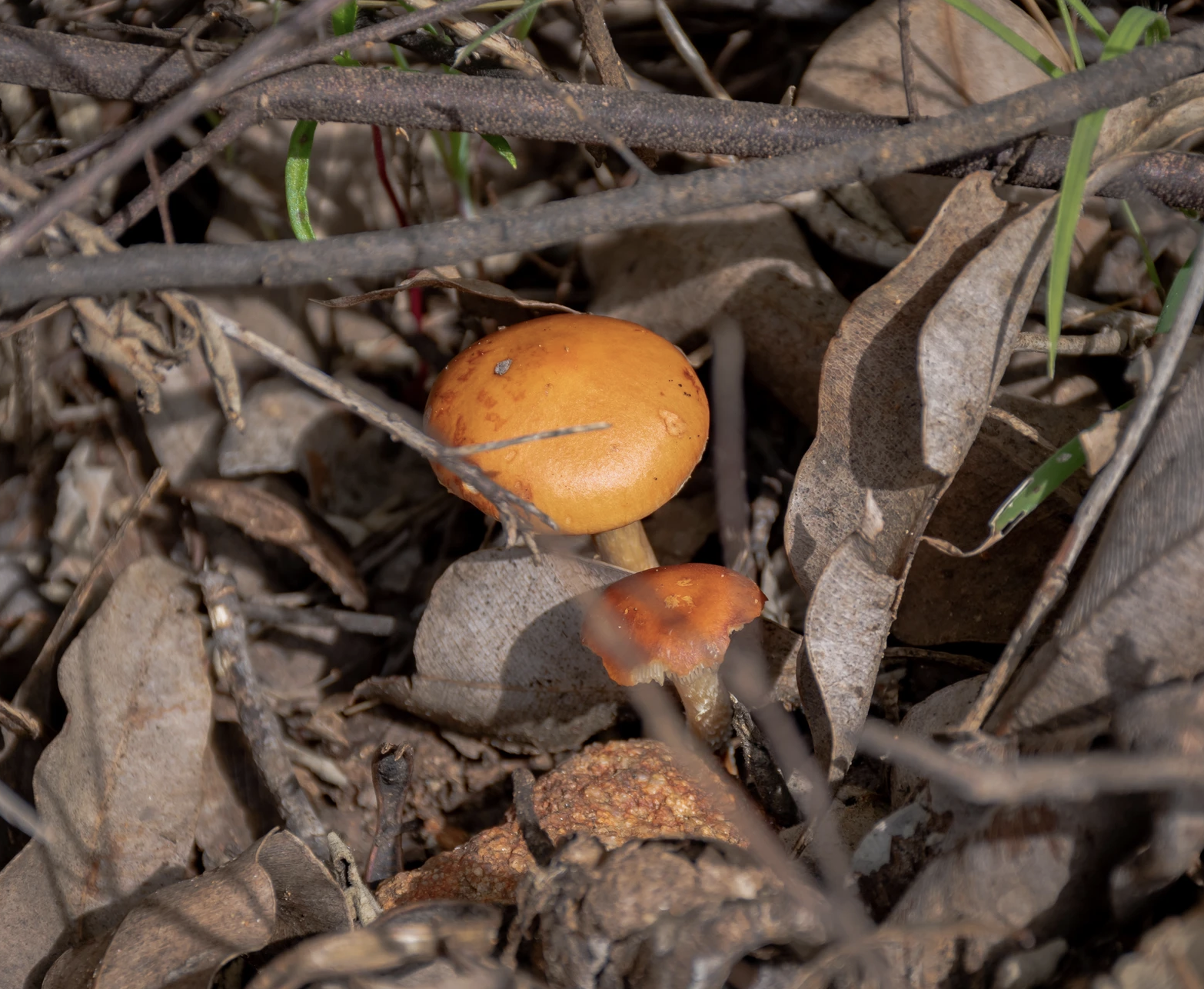
As the first rains are beginning to hit the southern half of the state, our trails seem to miraculously go from yellow to a luscious green overnight, with the dampened areas of the forest offering a myriad of fungi of all shapes, sizes and colours.
Fungi play a crucial role in our native ecosystems, keeping the bush healthy, while being an important source of food for insects and native animals.
The Botanic Gardens and Parks Authority has estimated that WA has over 140,000 species of unique fungi! Jarrahdale has many trails going through biodiversity hot-spots. Hunting* for fungi is to change pace while wandering through the bush, pay attention to tree trunks and undergrowth. A perfect family exploration.
Mundlimup Timber Trail
A great trail to start: an easy 3km Grade 2 trail starts at the historic 1890's timber tramway, then follows narrow paths through the bush. Fistulina spiculifera, or more commonly known as beefsteak fungus, is a common fungus that fruits on living or dead jarrah trees.

1872 Jarrahdale Railway Heritage Trail
Whilst you are in the Jarrahdale town area, head to the start of the 1872 Jarrahdale Railway Heritage Trail. This fantastic trail is dog friendly, and a great one for spotting a fabulous fungus. The trail is 9.8km long but can be cut short by doing the 4km loop instead. Both of these scenic trails follow the historic timber tramway, and you will be rewarded with views over the Darling Scarp and valley. Spotted on this trail is the Austroboletus occidentalis, commonly known as the ridge-stemmed bolete.

Just a 15 minute drive from the historic town of Jarrahdale, you'll find Serpentine National Park. Make your way to the Serpentine Falls carpark, there's picnic tables, barbeques and accessible toilet facilities here so it's a great place to have a picnic, or grab some sandwiches and drinks from the Jarrahdale General Store before leaving town.
Kitty's Gorge
This carpark is the trailhead for many fantastic trails within the National Park. One of the more famous trails is the iconic Kitty's Gorge, this challenging 14km return walk follows the Serpentine River and Gooralong Brook through picture-perfect woodlands, waterfalls, and granite outcrops. This is a grade 4 and there are some steep sections with an uneven surface, so some level of fitness is required. Look out for Southern cinnabar polypore (Pycnoporus coccineus) a delightful bright orange fan-shaped fungus which grows on dead wood.

Baldwin's Bluff Trail
If you're looking for an alternate challenge, Baldwin's Bluff Trail starts just behind the facilities near the carpark, you'll see a sign with information on the trail and surrounding trails in the area. This 6km loop trail is a grade 4 with some steep sections at the start to climb up to the bluff. At the top, the view is spectacular, looking northeast you'll see Serpentine Falls, Kitty's Gorge and the valley surrounding the falls. Looking west is a sweeping view of the Darling Range and valley. Keep an eye out for the stunning vermilion grisette fungi, also known as pretty grisette or vermilion amanita (Amanita xanthocephala). This egg yolk-coloured fungus can be found popping up on the forest floor and is usually identified by little warty clusters on top of the cap.

REMINDER:
- Fungi can be toxic enough to be fatal! We do not encourage "foraging" for mushrooms of any kind. "Hunting" is for the eyes, for the fun of exploring.
- Foraging for mushrooms is also harmful to the natural environment as they are a source of food for native fauna, and contribute to the health of the top soil.
- Fungi are protected by the same laws that protect native plants and animals. It is therefore illegal to collect them from National Parks, and a permit is required to collect them from State Forests.
Find out more here.

